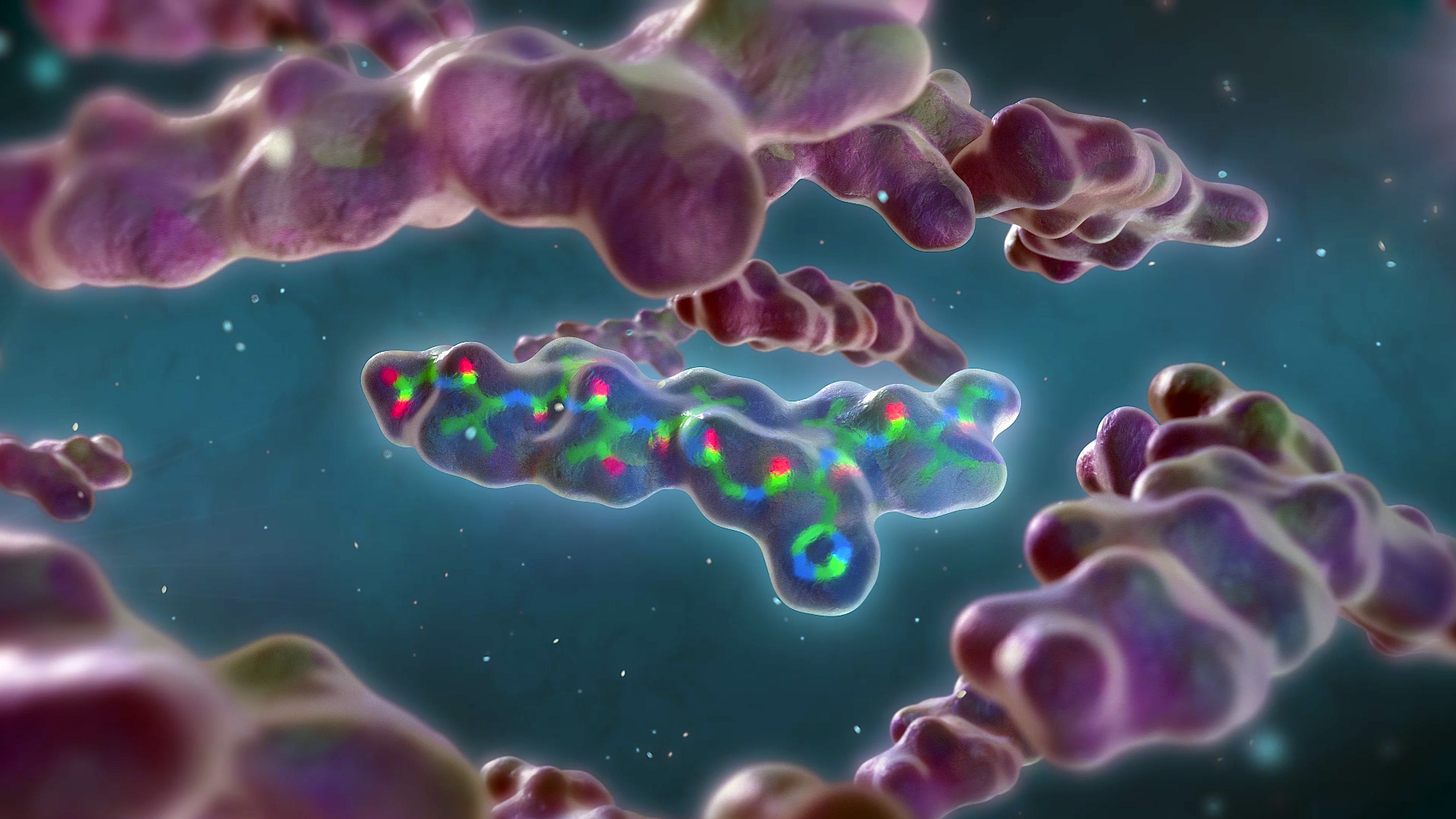

分辨率更上一层楼:解决社会面临的挑战
使用核磁共振分析固相和液相中的生物分子
他们的研究包括重要的球状蛋白、膜蛋白和蛋白复合体的结构、动力学和功能。
超高场核磁共振是独一无二的,它可以研究内在无序蛋白(IDPs)的属性和相互作用,这些蛋白质占人类蛋白质组的30-50%。IDPs 在基本的细胞生物学中发挥着关键的功能规则,它们也在许多疾病生物学案例中有所体现。
1.2 GHz at the ETH Zürich
The Bio-NMR group, headed by Roland Riek, is part of the Laboratory of Physical Chemistry at the Department of Chemistry and Applied Biosciences of the Swiss Federal Institute of Technology (ETH) Zurich.
Nuclear Magnetic Resonance Spectroscopy (NMR) is one of the very few experimental techniques in structural biology to determine atomic resolution structures and to investigate dynamic features and intermolecular interactions of biological macromolecules at atomic resolution. Using NMR as their main tool, the objective of the research in Roland Riek's group is to understand the conformational switches of proteins associated with amyloid diseases and trans-membrane signaling.
1.2 GHz at the University Düsseldorf/ Forschungszentrum Jülich
The function of each cell and each organism decisively depends on the dynamic interactions between biological macromolecules and on their correct three-dimensional structure. Faulty interaction and incorrectly folded structures eventually lead to diseases and ageing.
The aim of the Institute for Physical Biology at the Heinrich Heine University of Düsseldorf is to understand these interactions and to determine the three-dimensional structure of the protein complexes involved in cellular processes - if possible, at atomic resolution.
They are interested in understanding the structural features of life's key players and to use their insights to identify new therapeutic opportunities to interfere with disease-related processes.
In this respect the Etzkorn Group at the Institute for Physical Biology of the Heinrich Heine University Düsseldorf focuses on the following topics:
Membrane systems in neuronal signalling, NMR method development and Biocatalysis.
The Ultra-High Field NMR of the Durch Research Consortium at Utrecht
The uNMR-NL facility enables non-invasive characterization of molecular systems from the atomic to micrometer range by ultra-high field NMR. The current uNMR-NL high-end 1.2 GHz spectrometer is equipped with state-of-the-art instrumentation for all fields of research needed.
Understanding the Behaviour & Communication of Glycans with NMR
In this interview, Jesús Jiménez-Barbero, the scientific director of CIC bioGUNE in Bilbao, Spain, discusses his research on the role of sugars (glycans) in cellular interactions. Using NMR spectroscopy, his team studies how these flexible molecules interact with other cells and pathogens. He highlights advancements in NMR technology, including a new GHz instrument, which enhance their ability to analyze complex glycoproteins and their interactions, particularly in the context of viral infections and cancer. This research aims to develop new therapeutic strategies by understanding these molecular interactions.
Ultra-High Field NMR: Studying Intrinsically Disordered Proteins (IDPs)
Julie Forman-Kay explains the benefits of High Field NMR at the University of Toronto’s NMR center. Learn how her team uses this advanced technology to study disordered proteins and investigate for example autism-related protein variants. Discover the groundbreaking research on how molecular environments impact protein function and stability.
Atomic Clarity: Exploring Disordered Proteins with 1.0 GHz Precision
In this interview, Professor Miquel Pons from the University of Barcelona shares how Ultra-High Field NMR is transforming our understanding of intrinsically disordered proteins, key players in human biology and disease. As one of the first researchers in Europe to adopt Bruker’s 1.0 GHz NMR magnet, he reveals how this cutting-edge technology enables atomic-level insights into complex biomolecules, paving the way for breakthroughs in cancer research and biologics development. Discover how scientific curiosity, bold decisions, and advanced instrumentation are shaping the future of structural biology.
Precision and Possibility: Ultra-High Field NMR in Action
In this interview, Dr. Margarida Gairi, NMR specialist at the University of Barcelona’s Scientific and Technological Centers, shares how Ultra-High Field NMR is unlocking new frontiers in structural biology. From characterizing complex monoclonal antibodies in their native formulations to resolving the intricacies of intrinsically disordered proteins, she highlights how advanced instrumentation - combined with fast NMR methods - delivers atomic-level insights with surprising efficiency. Discover how her work is expanding the boundaries of what’s possible in biologics and protein research.